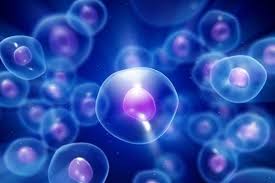Mesoscopic Nanostructures and Thermal Stability Improvement of Si / Cu Sputtering Layer Based on Nano-Micro PhD
Researcher and author: PhD student : Afshin Rashid
Note: Modeling of Si / Cu nanoparticles is based on a relationship between molecular mechanics and solid mechanics, an energy-equivalent model for the mechanical properties and nano-molecular structure of the material sputtering layer.
In nanotechnology, certain parameters and systems must be used to perform such processes. For example, in the metal process, the use of copper metal instead of the common aluminum metal for interconnections between different practical parts is inevitable. However, the rapid penetration of Cu atoms under Si in the heat treatment results in the formation of a copper silicon layer and ultimately destroys the electronic fragment. To solve this problem, a middle layer of late materials such as Ta, w or Mo is usually used as a barrier to improve the thermal stability of the Si / Cu layer .
Nano mesoscopic structures in multi-layer systems Aspatrnyg
In characterization of nanoparticles and Si / Ta / Cu multilayer systems there is a negative bias voltage effect on improving the electrical and structural properties of Ta sputtering layer penetration barrier in Si / Ta system. The surface processes of the Si substrate, including combustion, are carried out by plasma and ion beam technology. Such integrated circuits with their unique features at the nanometer scale have a variety of applications to mesoscopic systems.
The macroscopic properties of nanoparticles such as melting point, boiling point, and electrical conductivity are accomplished through a sample that is large enough to measure under normal laboratory conditions. When the melting point of a nanomolecule is measured, the behavior of a large number of nanoparticle molecules is in fact examined, and this is not true for all materials; Look very different to the same material in large dimensions.
Conclusions from the transformation of mesoscopic nanostructures and the improvement of thermal stability of the Spattering layer :
The properties of nanomaterials and nanoparticles can depend on their size. This fact can be contradicted by the fact that the properties of materials such as solid, liquid, and gas are only related to the atoms and molecules of the constituent material and their bond type or to the arrangement of atoms, in the macro and micro dimensions. But things are changing at the nanoscale, and as a result, the material properties may undergo major changes.




